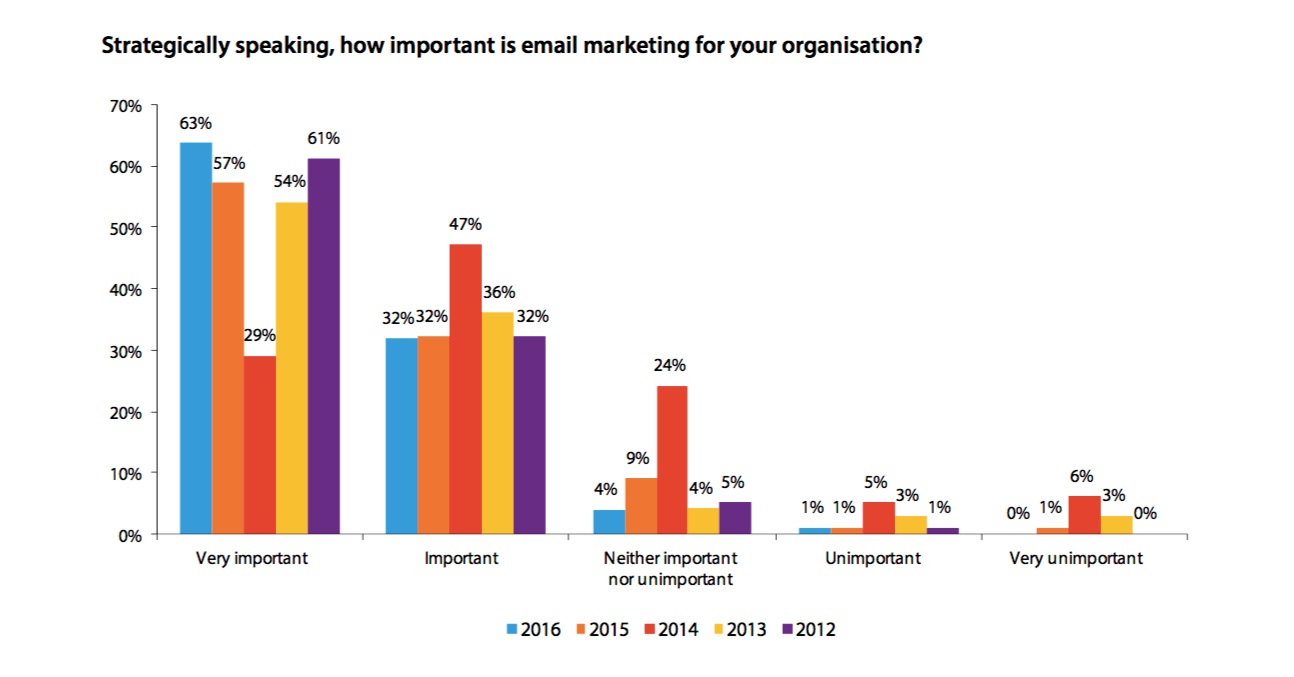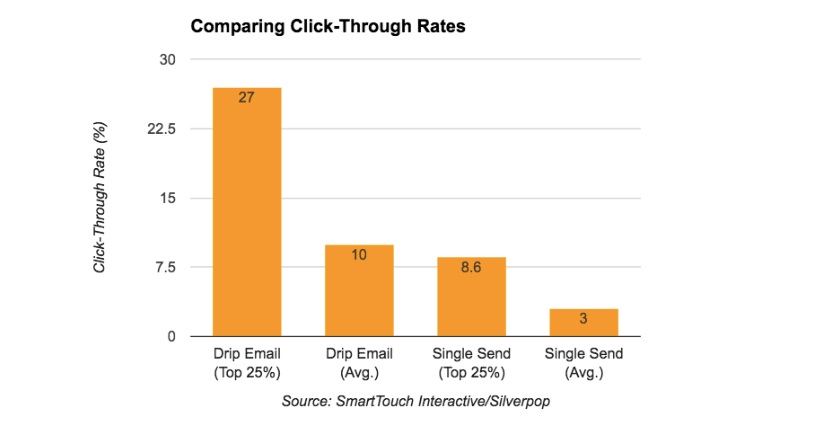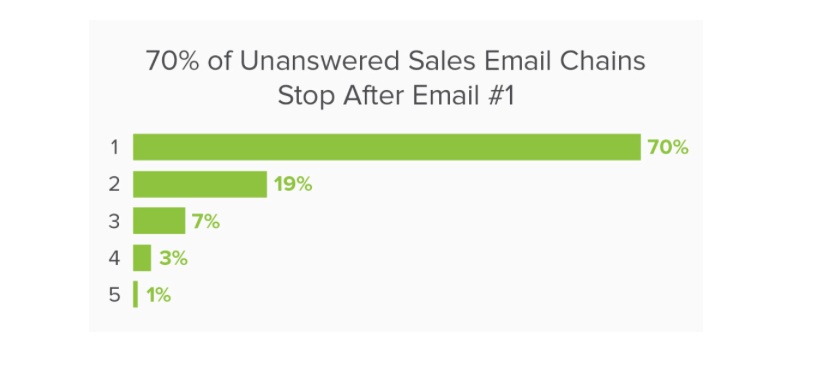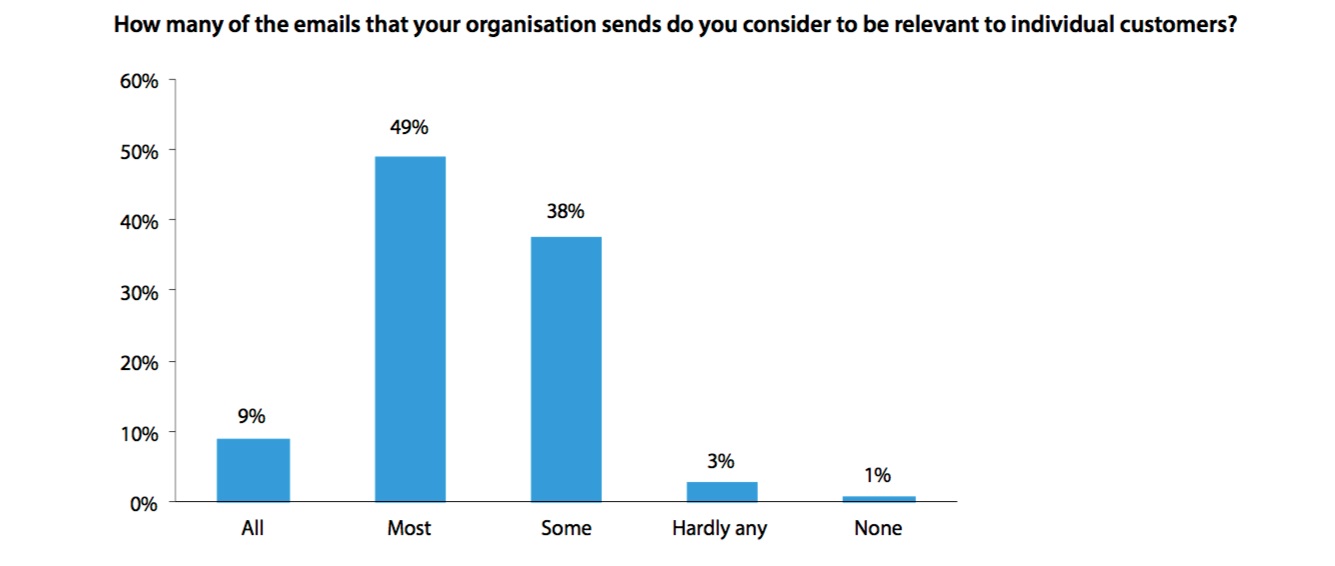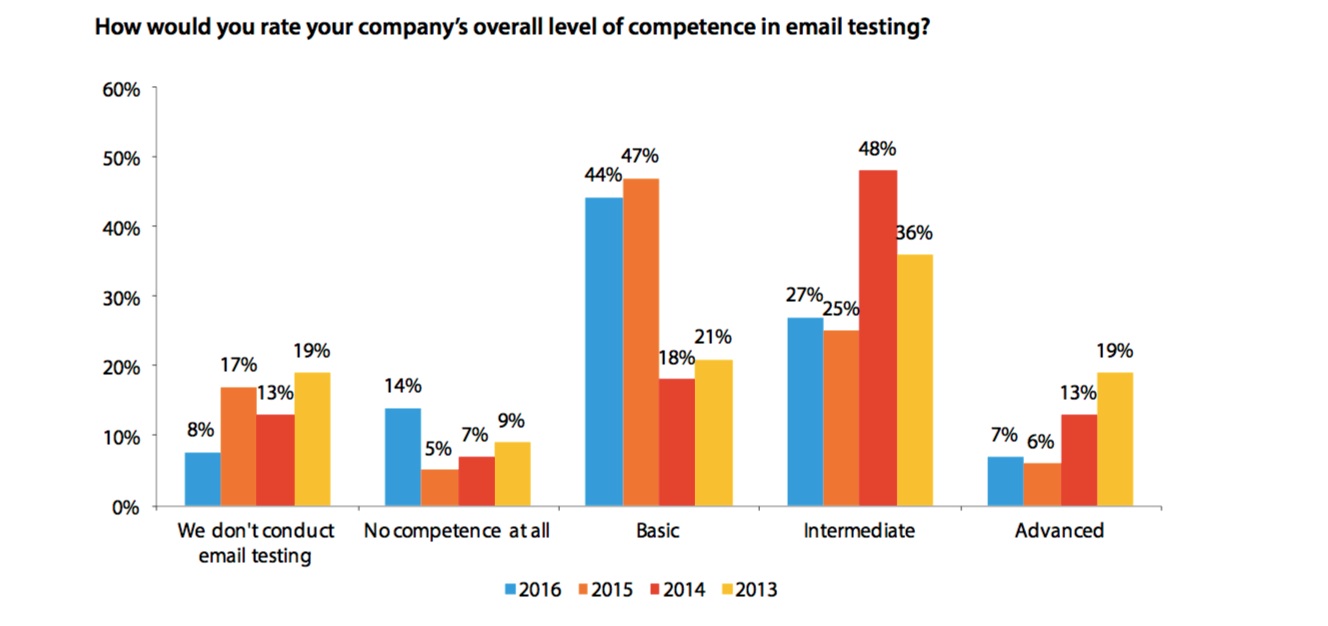There’s no doubt that when done effectively, email campaigns offer the biggest rewards in terms of conversions and return on investment of any marketing activity. It’s little surprise then that the majority of businesses use it as their go-to tactic for encouraging sales, and as a result is considered imperative to marketing success, as is shown in the graph below from the Direct Marketing Association, in which 95% of businesses currently rate its use as either ‘very important’ or ‘important’.
However, despite the general consensus being that organisations should prioritise email marketing, there is still plenty of room for improvement when it comes to implementing a strategy; the same DMA study found that just 30% of marketers believe that their organisation’s level of competence in email marketing is good or advanced.
One proven tactic to boost engagement levels and really get the most out of your email campaigns is marketing automation. More and more companies are employing automation; 67% of marketing leaders now make use of it, according to Salesforce, and the results are usually resoundingly positive; research by Autopilot HQ notes that businesses using marketing automation generate twice as many leads as those using just email software.
One effective tactic that comes under the umbrella of automation is email drip campaigns. Read on for more information about why this form of automation is great for encouraging conversions throughout your sales pipeline, and what you need to know to start setting up your own version.
What is a Drip Campaign?
Drip campaigns involve sending out emails automatically on certain dates, working to a pre-determined schedule with pre-written content. For example, an email could be set to be sent out immediately after someone subscribes to your mailing list, then another one a few days later and so on. The aim of these campaigns is not only to encourage sales from new leads, but also to reengage old leads that haven’t interacted with your brand for a while. The fact that these messages are sent automatically means you are able to continue to touch base with your prospects without diverting time away from other projects. You can download software to set up these campaigns yourself, or use an online tool such as those offered by Marketo, Pardot and Hubspot.
Drip Campaigns VS Lead Nurturing
Although these two terms are often used interchangeably, they actually differ slightly in their meaning. Drip campaigns are those that send out emails based only on time intervals, for example:
Day 0 – Thanks for signing up
Day 1 – Introduction to our services
Day 3 – Feature benefits
Day 7 – Free trial offer
In contrast, lead nurturing is when emails are sent based on the lead’s activity. An automated campaign using this tactic will use the data gathered on the user’s behaviour in order to target them with messages that will move them further along the sales pipeline. For example, if a lead visits your site a certain number of times in a set period of time, or if someone fails to complete their purchase after adding an item to their shopping cart.
Clearly these types of email campaign both have their own merit when it comes to encouraging engagement and ultimately moving leads further down the buying process. Depending on your overall goals, the two methods can be used separately, and provided enough research and planning is put into place, will arm your leads with the information they need to go ahead with a purchase from you. However, when used together you are likely to see even better results, with higher conversions and shorter buyer cycles.
What are the Benefits of Drip Campaigns?
The most obvious advantage to utilising drip campaigns is the time it saves. With no need for manual intervention, you are free to focus your resources on other activities such as lead sourcing or closing deals, while your subscribers are automatically moved further along the sales process. This is far from the only benefit involved, though – other good reasons to implement drip campaigns in your email marketing strategy include:
- More Opens and Clicks – Research by Silverpop discovered that open rates for drip emails are around 80% higher than single sends. Click-through rates are also improved; SmartTouch found that the highest-performing 25% of drip emails had click-through rates of more than 27%, compared to a rate of 8% for the highest-performing single sends, as shown in the graph below.
- Reach Passive Prospects – Well-crafted drip campaigns are great at reaching leads who have so far remained passive; those that have subscribed, but are yet to make a purchase. Continuing to target these users is very important; research from Aberdeen Group notes that on average, a lead requires ten marketing-driven ‘touches’ in order to convert them into buyers. Sending regular messages through a drip campaign is the ideal solution.
- Useful Analytics – Drip campaigns provide a wealth of exact data on user interaction such as opens, clicks, and what type of content converts the most. When your marketing team is armed with this data they can easily tweak your future campaigns accordingly and see better results because of it.
- Increase Brand Familiarity – A study by Nielsen revealed that 60% of consumers choose to buy products from familiar brand. This clearly demonstrates the need for smaller and emerging businesses to ensure that their marketing efforts also have a focus on building trust and awareness to their brand. This is simple to do with drip campaigns; provided your emails are not simply continuous hard-sell messages but actually offer some value to your audience, they will come to recognise your company as one that is worthy of their custom.
- Easy to set up – Drip campaigns are very easy to implement, even for those with little technological or analytical know-how. As we mentioned earlier, there are a range of online providers who you can turn to in order to make the whole process quick and painless, and once they’re set up they require no further effort.
- Get Ahead of the Competition – According to research by Yesware, you have a 25% chance of eventually hearing back from a lead if you continue to send follow up emails. With this in mind, it is very surprising that the majority of companies give up at the first hurdle. As the chart from Yesware below shows, a shocking 70% of sales emails drop off after the first one, meaning that companies who do persist are already ahead of much of their competition and ultimately have a better chance of winning customers over.
Getting the Most out of Your Drip Campaigns
Drip campaigns can have a variety of different uses, for example courses split into different parts, re-engaging older leads and, of course, encouraging sales – particularly important given that Gleanster says that 50% of leads are qualified but not ready to buy. However, as with any aspect of your marketing strategy, there are a few best practices to bear in mind in order to give your email drip campaigns the greatest chances at success. These include:
- Segmentation – Sending messages that are pertinent to the receiver is vital; Juniper Research notes that relevant emails drive 18 times more revenue than broadcast emails. However, only 9% of marketers say that the emails that their company sends are all relevant to the customer (see graph below from the Direct Marketing Association). In order to create the most effective campaigns, you should segment your email lists based on the lead’s needs, interests, responsibilities and location, to name just a few, and then shape the content for each segment accordingly.
- Change Up Content and Format – Don’t rely on one type of format throughout your campaign; there are plenty of options you can test out, for example customer testimonials, how-to guides, special promotions, and industry news. This goes for the way in which you present your content too – use a mix of video, images and text-only messages in order to keep things fresh and more engaging.
- Don’t be a Nuisance – When it comes to drip campaigns, the goal is to message your prospects regularly enough for your brand to become familiar and stay top of mind, while convincing them that your product or service is right for them. However, this definitely doesn’t mean sending so many emails that they become intrusive, or using consistently hard-sell techniques; in fact, this is a sure way to end up with plenty of unsubscribes and spam reports.
- Keep Testing – Thorough monitoring and testing should be a part of any marketing campaign, and yet, as is shown in the DMA chart below, only a paltry 34% of marketers say their company’s email testing is advanced or intermediate. A/B testing is great for drip frameworks as there are a number of things you can tweak one at a time, such as subject line, CTA, content and preview text. Having a clearer understanding of exactly what is and isn’t working for your audience(s) will enable you to produce more effective future campaigns.
Ready to go?
If you’re looking to kick start your next email drip campaign, why not save time and money by using Global Database? Our B2B contact directory holds millions of direct contact details for key decision makers across 34 verticals and 190 countries. With one of the highest data accuracy ratings on the market and free unlimited Excel exports, you can be sure that your campaign will have the greatest chance of success.
For more information or to request a free demo visit us at www.GlobalDatabase.com
